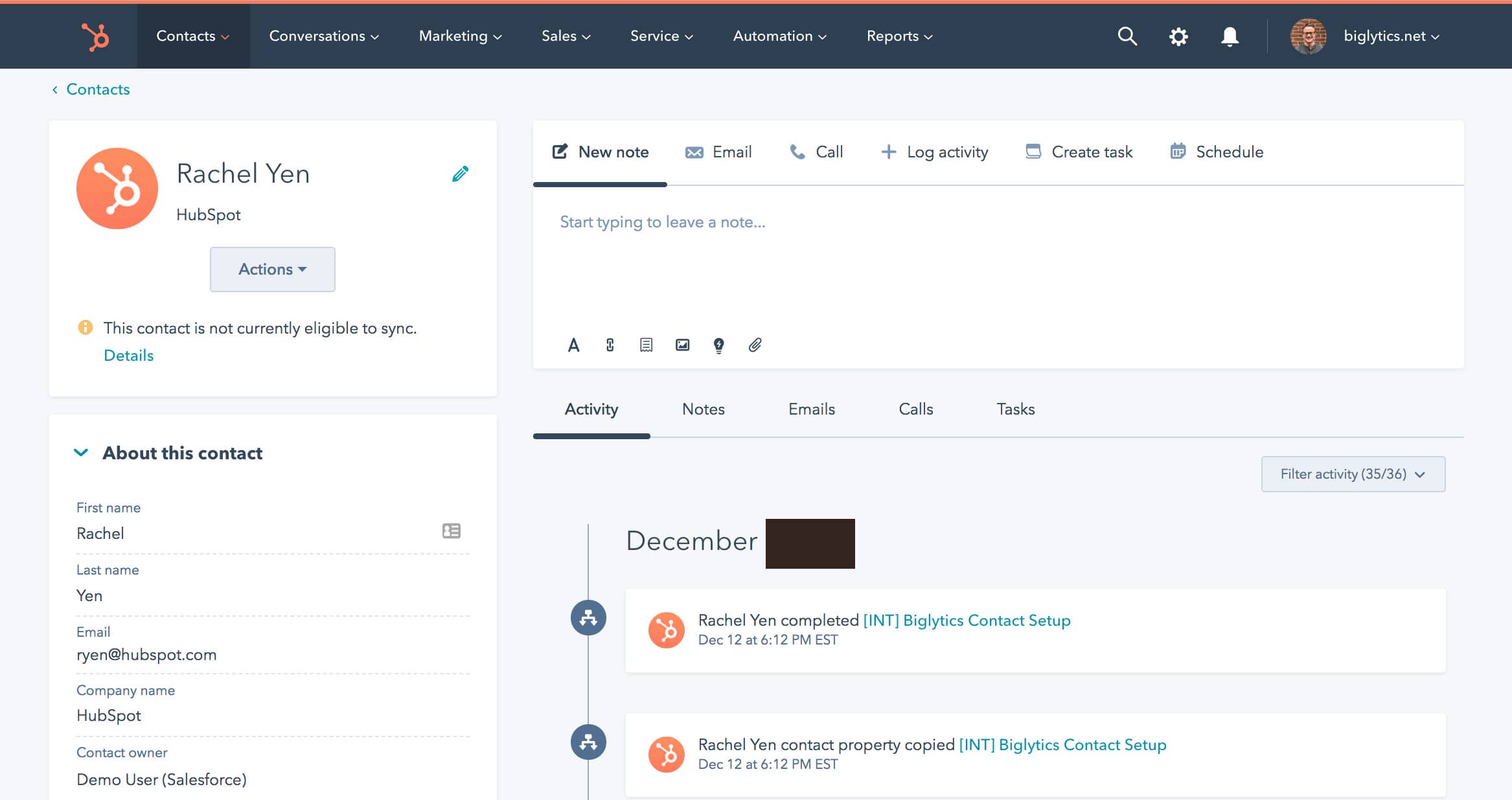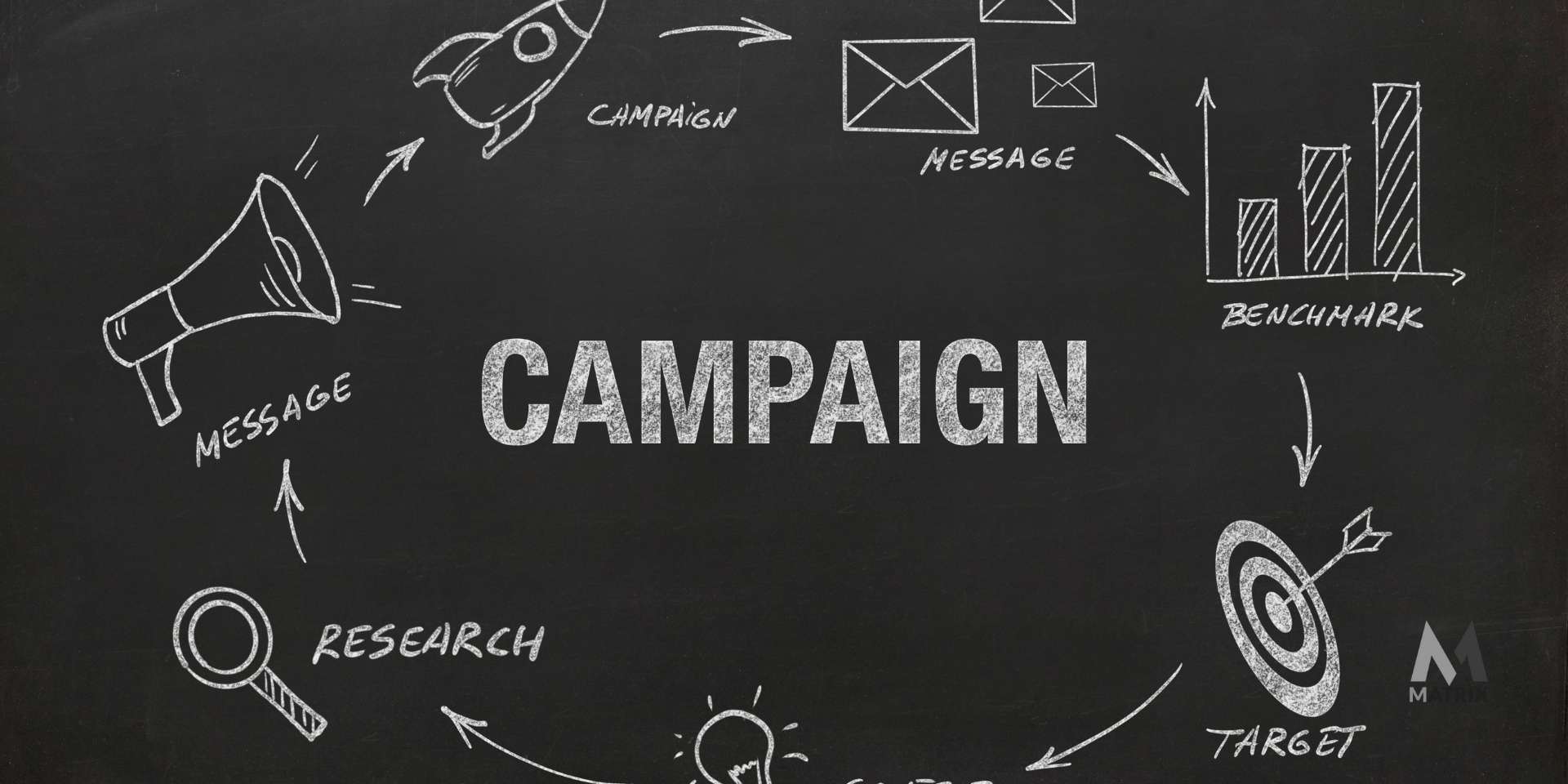Create a Lead Nurturing Campaign in HubSpot Marketing Hub
Your lead nurturing campaign in HubSpot Marketing Hub is crushing your sales goals.
If you’re like most businesses, you’re always looking for ways to increase leads and sales. And if you’re using HubSpot, you’re in luck – because one of the many things HubSpot can do is help you create a lead nurturing crusade.
What is lead nurturing? Simply put, it provides valuable content to prospects and customers relevant to their needs while collecting information to deliver more targeted messages in future campaigns.
A lead nurturing campaign aims to move leads further down the sales funnel and closer to becoming customers. You must create interesting and relevant content for your target audience and then track and analyze the results to continue improving your campaign.
You’re always looking for ways to increase leads and sales, but you don’t know how.
If you’re using HubSpot, you’re in luck – because one of the many things HubSpot can do is help you create lead nurturing programs.
A lead nurturing campaign strategy aims to move leads further down the funnel and closer to becoming customers. You must create interesting and relevant content for your target audience and then track and analyze the results to continue improving your lead-nurturing program examples.
HubSpot Marketing Hub Professional offers a wide range of features to help you create a lead-nurturing campaign that will move your leads down the funnel and turn them into customers.
Here’s how to create a lead nurturing program in HubSpot and use a lead nurturing email campaign.
How to create a lead nurturing campaign in HubSpot

1. Define your goals and target audience.
The first step is defining your campaign goals and determining your target audience. This will help you determine what content to create and deliver.
2. Create your content.
Once you know your target audience and what content they’re interested in, it’s time to start creating! HubSpot offers a variety of tools to help you with this process, including templates, stock images, and more.
3. Deliver your content.
Now it’s time to deliver your content! You can do this in several ways, including email, social media, and paid advertising. Be sure to track the results so you can gauge the effectiveness of your campaign and make necessary adjustments.
4. Analyze and improve.
As with any marketing campaign, analyzing the results and making changes based on your learning is important.
Setting up a lead nurturing agenda in HubSpot is easy. You can create a form to collect contact information from potential leads and add the form to your website. You can also create a landing page to collect leads and add the form to the landing page.
Finally, you must promote your landing page so people can find it and submit their information.
When creating your content, it’s important to keep your target audience in mind. What are they interested in?
What type of information do they need to make a purchase? Once you have a good idea of their interest, it’s time to start creating! HubSpot offers a variety of tools to help you with this process, including templates, stock images, and more.
Once you’ve created your content, it’s time to deliver it! You can do this in several ways, including email, social media, and paid advertising. By delivering your content in various formats and using a variety of channels, you can reach more people and increase your chances of conversion.
Finally, it’s important to track the results of your campaign so you can gauge its effectiveness and make necessary adjustments. HubSpot’s reporting tools can help you with this by giving insights into how people interact with your content and what’s working well.
HubSpot lead generation and lead nurturing program in HubSpot Marketing Hub

Setting up HubSpot lead generation is a relatively simple process, but it’s important to take the time to do it correctly so you can maximize your results. Here are a few steps to get you started:
1. Create a form.
The first step is to create a form to collect contact information from potential leads. This can be done in HubSpot’s Form Builder, and you can choose from various fields to collect the necessary information. You can use WPFroms HubSpot native integration as well. Or use WPforms or others.
2. Add the form to your website.
Once you’ve created the form, you must add it to your website. You can do this by copying and pasting the code provided by HubSpot or by using one of HubSpot’s integration partners.
3. Publish your form.
Now that the form is on your website, you need to publish it before submitting their information. You can do this by clicking the Forms tab in HubSpot and clicking the Published button.
4. Create a landing page.
A landing page is a page on your website designed to collect leads. You can create a landing page in HubSpot’s Landing Page Builder and choose from various templates or create your own.
5. Add the form to your landing page.
Once you’ve created the landing page, you must add the form so people can submit their information. You can do this by clicking the Forms tab in HubSpot and clicking the Add to Page button.
6. Publish your landing page.
Now that the landing page is complete, you must publish it so people can submit their information. You can do this by going to the Pages tab in HubSpot and clicking the Published button.
7. Promote your landing page.
The final step is to promote your landing page so people can find it and submit their information. You can do this by sharing the page on social media, emailing your list, or running a paid advertising campaign.
Lead nurturing campaigns in HubSpot Marketing Hub may have several components or channels that must be tracked.
By following these steps, you can create a lead generation system that will help you capture more leads and convert them into customers.
Creating a lead nurturing program is a great way to move leads further down the funnel and closer to becoming customers. To do this, you need to create content that’s interesting and relevant to your target audience and deliver it in a way that’s convenient for them. HubSpot offers a variety of tools to help you with this process, including templates, stock images, and more.
When creating your content, it’s important to keep your target audience in mind. What are they interested in? What type of information do they need to make a purchase?
Once you have a good idea of their interest, it’s time to start creating! HubSpot offers a variety of tools to help you with this process, including templates, stock images, and more.
Once you’ve created your content, it’s time to deliver it! You can do this in several ways, including email, social media, and paid advertising. By delivering your content in various formats and using a variety of channels, you can reach more people and increase your chances of conversion.
Finally, it’s important to track the results of your campaign so you can gauge its effectiveness and make necessary adjustments.
What are the lead nurture best practices?

A lead nurturing program is an important part of any inbound marketing strategy. You can nurture them toward a sale by providing valuable content to prospects and customers relevant to their needs. However, collecting information as you go to deliver more targeted messages in future campaigns is important.
Here are some tips for creating a lead nurturing campaign in HubSpot:
1. Define your goals
Before creating content or sending emails, you need to define your goals for the lead nurturing drive. What do you want to achieve? Are you trying to generate more leads, convert more leads into customers, or keep customers engaged? Once you know your goal, you can create content and more relevant messages for your audience.
2. Segment your list
Segmenting your list to target your content and messages more effectively is important. You might want to segment by buyer persona, industry, or stage in the buying process. This will help you create content that’s more relevant to your audience.
3. Create valuable content
Creating valuable content is one of the most important aspects of a lead nurturing movement.
This content should be relevant to your audience and provide useful information they can apply in their own lives. You also want to ensure the content is engaging so people will want to read it.
4. Send timely messages
Timing is important when it comes to email marketing. You want to send messages that are timely and relevant to your audience. If you send too many messages, people will ignore them or unsubscribe. Conversely, people may forget about you if you don’t send enough messages. Finding the right balance and sending timely and relevant messages is important.
5. Test and analyze your results
Testing and analyzing your results to improve your lead nurturing programs is important. Lead nurturing barnstorming in HubSpot Marketing Hub may have several components or channels that must be tracked.
Try different content, messages, and timing to see what works best for your audience. And be sure to track your results to see how your campaign performs.
Lead nurturing is an important part of inbound marketing. You can nurture leads toward a sale by providing valuable content and sending timely messages. However, testing and analyzing your results to improve your campaign is important.
Marketing automation can increase lead conversion rate beyond belief

Marketing automation is one of the most important aspects of lead nurturing. It can increase your conversion rate right beyond belief.
Lead nurturing is an integral part of inbound marketing, and, as a result, it’s important to use effective tools to nurture leads toward purchase. Every inbound marketer should use one tool: marketing automation, which can significantly increase the lead conversion rate.
What is marketing automation?
Marketing automation is automating your marketing tasks to focus on more important things. It includes email marketing, social media marketing, and paid advertising tasks. You can set up rules and filters to automate your tasks with marketing automation, saving you time and money.
As the Chief Technical Officer, I can explain marketing automation in the context of artificial intelligence (AI) as the utilization of AI-powered tools and technologies to automate and streamline marketing tasks, enhancing the efficiency and effectiveness of marketing campaigns.
Marketing automation encompasses a wide range of capabilities, including:
- Automated Email Marketing: AI-powered email marketing platforms enable the creation of personalized and targeted email campaigns based on customer data, behaviors, and preferences. AI algorithms can optimize email subject lines, content, and send times to maximize open rates, engagement, and conversions.
- Customer Segmentation and Targeting: AI algorithms can analyze customer data to identify patterns, segments, and personas, allowing marketers to tailor their messaging and campaigns to specific customer groups, enhancing relevance and resonance.
- Predictive Analytics and Lead Scoring: AI-powered predictive analytics can assess customer behavior and likelihood of conversion, enabling marketers to prioritize leads, allocate resources effectively, and predict customer churn.
- Chatbots and Conversational AI: AI-powered chatbots and virtual assistants can handle customer inquiries, provide product information, and resolve issues 24/7, enhancing customer service and reducing response times.
- Marketing Attribution and ROI Measurement: AI can track marketing campaign performance across various channels and touchpoints, attributing conversions to specific marketing efforts and providing insights into return on investment (ROI).
- Dynamic Content Personalization: AI algorithms can personalize website content, product recommendations, and promotional offers in real-time based on individual customer preferences and behaviors.
- AI-Powered Social Media Marketing: AI tools can analyze social media data to identify trends, sentiment, and influencer opportunities, enabling marketers to optimize social media campaigns and engage with their target audience effectively.
Integrating AI into marketing automation strategies can lead to several benefits, including:
- Improved Efficiency: AI can automate repetitive tasks, freeing marketing teams to focus on more strategic initiatives.
- Enhanced Personalization: AI enables marketers to deliver personalized and relevant experiences to individual customers, increasing engagement and conversion rates.
- Data-Driven Insights: AI can analyze large volumes of customer data to uncover insights and patterns, improving decision-making and campaign optimization.
- Predictive Capabilities: AI can predict customer behavior and preferences, allowing marketers to engage with customers and anticipate their needs proactively.
- Scalability: AI-powered marketing automation platforms can handle large volumes of data and customers, enabling businesses to scale their marketing efforts effectively.
As AI continues to evolve, marketing automation will become even more sophisticated and integrated into the fabric of marketing operations. AI will empower marketers to create more personalized, data-driven, and effective campaigns, improving customer experiences, stronger customer relationships, and enhancing business growth.
How can marketing automation help with lead nurturing?
Marketing automation can help lead nurturing by automating tasks to focus on more important things. It can also help you segment your list to effectively target your content and messages. Additionally, marketing automation can help you send timely messages to nurture leads toward a sale.
As HubSpot inches into the middle market and enterprise, a best-of-breed model is beginning to emerge. The model where the best ERP platform is integrated with the best CRM platforms like HubSpot CRM.
Conclusion and lead nurturing programs in HubSpot Marketing Hub
Lead nurturing is an important part of inbound marketing, and marketing automation is one of the most important aspects of lead nurturing. By using marketing automation, you can increase your conversion rate significantly. If you’re not using marketing automation, you should start today.
If you want to learn more about marketing automation, check out this course. It will teach you everything you need about marketing automation and how to use it effectively.
You’re not sure how to create a lead nurturing program in HubSpot. You know it’s important but doesn’t know where to start.
Now you know how to create lead nurturing in HubSpot! You learned about the importance of lead nurturing and how marketing automation can help with the process. You also learned about the different aspects of lead nurturing and how to set up a campaign in HubSpot. Now you’re ready to nurture your leads toward a sale!
How Matrix Marketing Group can help with HubSpot, lead nurturing
Matrix Marketing Group is a Global HubSpot Partner and can help you with your HubSpot needs, including lead nurturing.
We have extensive experience with HubSpot and can help you set up lead nurturing campaign examples here that will help you convert leads into customers since 2002. Contact us today to learn more!
General FAQs
What is HubSpot?
HubSpot is a software company that helps businesses with inbound marketing, sales, and customer relations management (CRM). HubSpot also offers an online learning platform for inbound marketing. Inbound marketing is a methodology of attracting, engaging, and converting prospects through content creation and distribution. It’s a more holistic approach than outbound marketing, which involves buying ads or cold calling. HubSpot also offers an online learning platform for inbound marketing.
Why is lead nurturing important?
Lead nurturing aims to provide valuable content to prospects and customers relevant to their needs while also collecting information to deliver more targeted messages in future campaigns. Nurtured leads are 52% more likely to buy from you than non-nurtured leads.
How can Matrix Marketing Group help with HubSpot lead nurturing?
Matrix is a Global HubSpot Partner and can help you with all your HubSpot needs, including lead nurturing. We have extensive experience with HubSpot and can help you set up a lead nurturing campaign that will help you convert leads into customers since 2002. Contact us today to learn more!
What are the benefits of using a CRM?
A CRM will help your organization run more efficiently. It’ll allow you to keep track of every customer or lead, giving you the valuable insight needed for better communication, segmentation, and targeting in all your marketing efforts. There are many benefits of using a CRM for your business.

